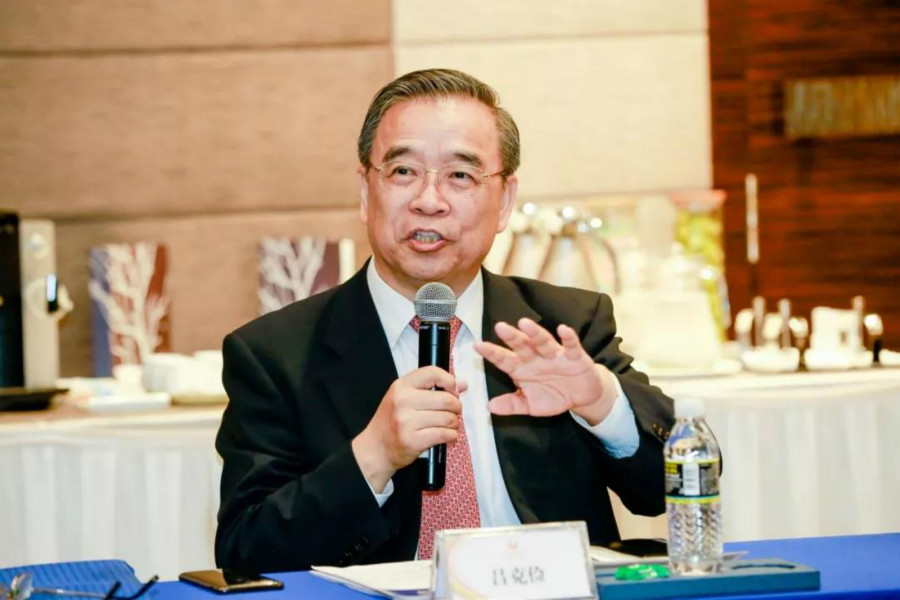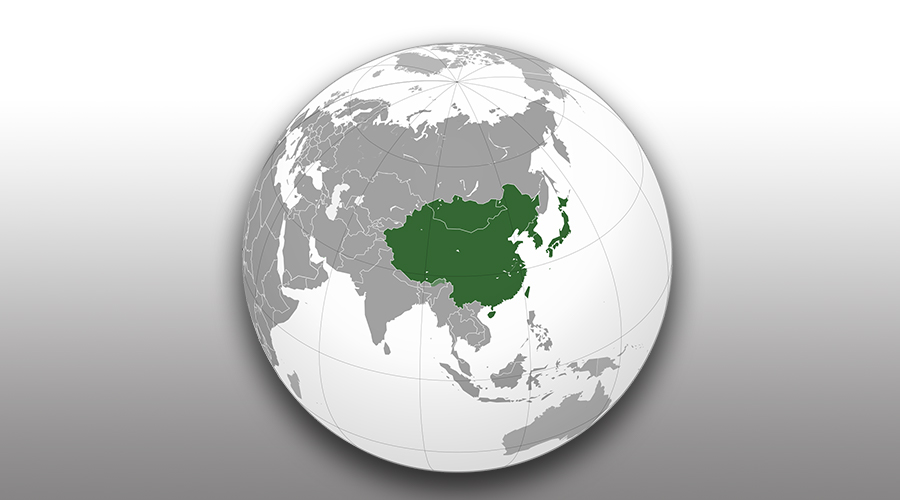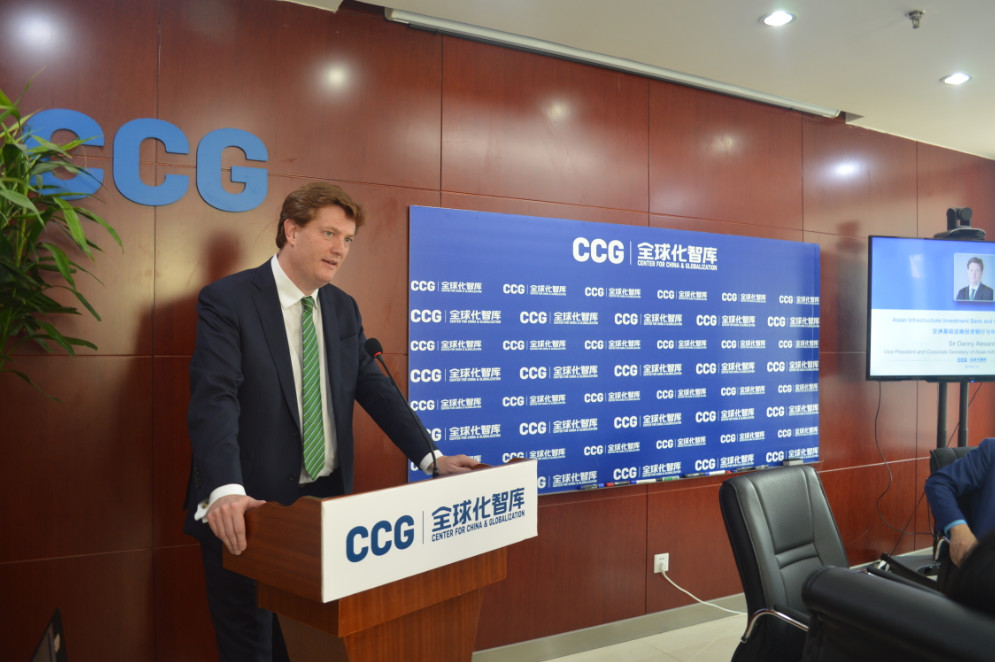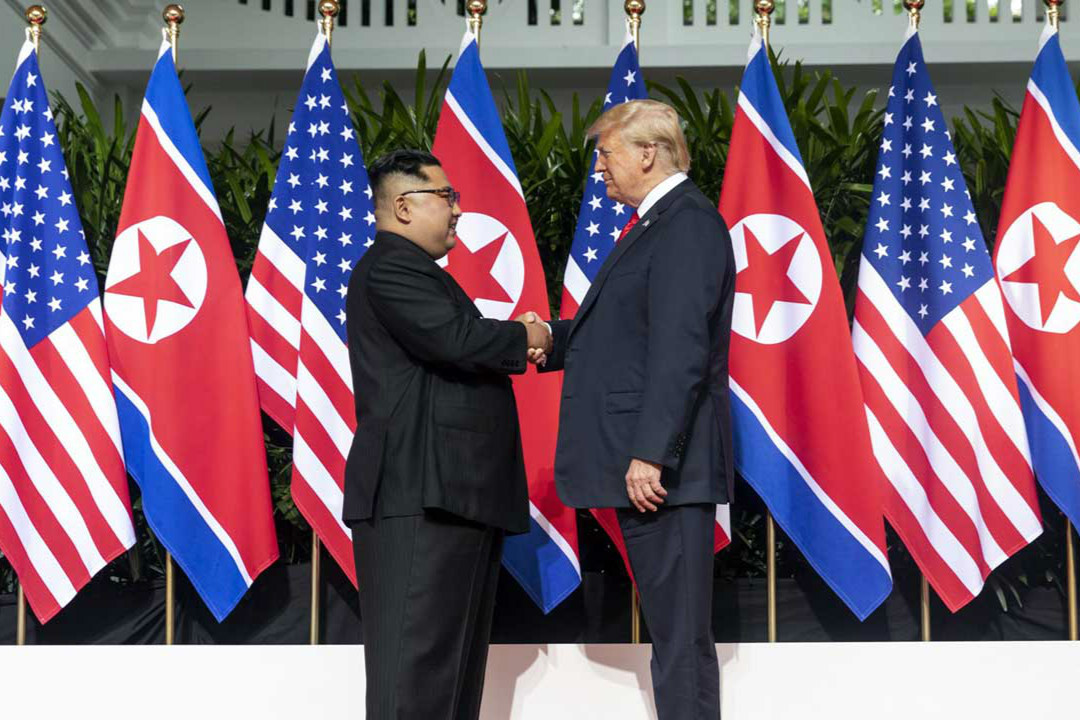自成立以来,CCG对国际关系和中国外交领域保持高度关注,深度追踪中国与美国、加拿大、欧洲、亚洲、非洲、拉美、澳洲、中东等国家与地区的双边经贸关系发展与变化,多年来致力于中美欧合作、一带一路、WTO改革、CPTPP等多边领域的研究,为政策制定建言献策。CCG在连续多年主办的年度品牌论坛设置中美关系、中欧合作等议题,积极开展国际交流活动,充分发挥智库“二轨外交”作用,常态化赴多国调研与交流,发布中美经贸系列中英文研究报告。常年主办系列圆桌研讨会,邀请来自美国、加拿大、英国、澳大利亚、日本、德国、埃及等多国智库专家学者、政要、商界精英、外交使节就国际关系与多边合作等议题进行研讨与交流。
-

吕克俭:抓住新机遇,拓宽中日合作新领域
文章选自中文导报 2019-07-15(本文是作者在第一届华智论坛上的演讲稿)
2019年7月31日 -

苏浩:东亚经济合作从“雁阵”变成“平轴”
文章选自环球时报,2019年7月10日
2019年7月15日 -

亚投行副行长艾德明爵士CCG演讲全文:三大核心目标及“高大上&接地气”的成功经验
对于亚投行来说,统一标准的共识、良好的治理以及高效率的工作对于深化同政府、公众和私人股东的合作至关重要。我们建立了一系列指标,包括金融评估,环境安全和社会安全等,亚投行始终坚持贯彻落实这些指标。归结起来,这些指标所代表的就是亚投行的核心价值观:精简(lean),廉洁(clean)以及绿色(green)。
2019年6月18日 -

Victor Gao: What Next for the Korean Denuclearization?
North Korean Supreme Leader Kim Jong-un shakes hands with US President Donald Trump at a summit in Singapore on June 12, 2018. (Dan Scavino Jr./White House)
2019年3月15日 -

Zamir Ahmed Awan: Beijing, Islamabad committed to making flagship CPEC project
The China-Pakistan Economic Corridor (CPEC) is an example for the rest of the world. CPEC is one out of six planned corridors under the Belt and Road Initiative (BRI) launched by China in 2013. These corridors include the China-Mongolia-Russia Economic Corridor (CMREC), New Eurasian Land Bridge (NELB), China-Central Asia-West Asia Economic Corridor (CCWAEC), China-Indochina Peninsula Economic Corridor (CICPEC), China-Pakistan Economic Corridor (CPEC), and Bangladesh-China-India-Myanmar Economic Corridor (BCIMEC). All of these economic corridors are very well conceived and planned. The importance of each corridor is undeniable. Upon completion of all these corridors, the world will be transformed and enter into a new era. Global economic patterns will change and trade will take on a new shape. However, five of these corridors pass through more than two countries, and it is understood that the more countries involved, the more difficult it becomes due to cultural barriers and variations in political and economic conditions in each country. Similarly, distance also matters; the longer the corridor, the more time and money it may take to complete.Fortunately, CPEC is the simplest and the most feasible. It is a project jointly built by China and Pakistan, so it has fewer countries involved compared to the other five corridors. The 3,000-km-long corridor starts from China’s Kashgar and ends at Pakistan’s Gwadar, the shortest distance among all the corridors. Above all, the relationship between China and Pakistan is ideal, and there is little disagreement between these two countries. In fact, China and Pakistan support each other on all issues at the domestic, regional and global level. There exists a complete harmony. Due to all of these reasons, CPEC has been declared a flagship project, and the governments of both countries are giving it highest priority. Both nations are committed to making it a success. Whatever the difficulties or hurdles, both sides are committed to overcoming them and creating an example for the rest of world.To date, the people of Pakistan are enjoying the fruits of early harvest projects under CPEC. With the launch of CPEC, Pakistan’s GDP improved from 4.7 to 5.5. It was a big jump as the nation has faced many complex issues over the last 4 decades. The country was an energy deficient nation and faced a shortage of electricity. There was load-shedding for several hours on a daily basis. But under CPEC’s early harvest projects, around 10,000 megawatts of electricity were added to the national grid. Load-shedding minimized and almost vanished from the big cities of Pakistan. There are a few other power generation projects at an advanced stage of completion and expected to be completed by 2020. It is expected that Pakistan will face a smaller gap between supply and demand of electricity once all projects are completed in the next few years. The laying of optical fiber lines between China and Pakistan is another advanced stage project, and internet speeds will be improved greatly upon its completion. This will revolutionize the IT industry in Pakistan. It will also reduce dependence on sea-bed cables connecting Pakistan with the rest of the world. Due to damage to undersea cables, which are difficult to repair quickly, Pakistan has been sporadically cut off from the rest of world. A network of roads has been completed across Pakistan, and many more are under construction or in the pipeline. A strong network of roads has made Pakistan very well connected internally. It also has helped to improve connectivity and ultimately enhance business activities. Road networks have contributed to the nation’s socioeconomic development.The country’s railway system is also slated for a complete revamp. The Karachi-Peshawar Railway Line project, also referred to as ML-1, is in the advanced stage of finalization and may be initiated soon. Rail will become the cheapest and quickest mode of transportation for passengers and cargo in Pakistan in the near future. Fast-track industrialization is also expected, as special economic zones (SEZs) are being launched soon. There are nine SEZs in total, three of which are almost ready to be launched: Rashakai SEZ, M-3 Industrial Zone in Faisalabad and Dhabijee Industrial state in Sindh. The SEZs will rapidly change Pakistan’s fate.
2019年2月25日


